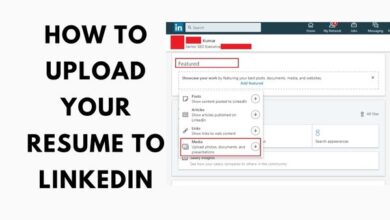
How to stay secure online with Chrome: Here is 5 ways to stay secure online with chrome. Chrome is designed to be secure by default, protecting you against hazardous and deceptive websites that may steal your passwords or infect your device. Many of the methods that are now essential to browser security (such as sandboxing and site isolation) were pioneered by Chrome, and with recent developments like predictive phishing protection, you can be confident that we’re utilizing cutting-edge technology to keep your data secure.
But what can you do to ensure your own online safety? To commemorate Cybersecurity Awareness Month, we asked a few Chrome security engineers for some advice:
Chrome is designed to be secure by default, protecting you against hazardous and deceptive websites that may steal your passwords or infect your device. Many of the methods that are now essential to browser security (such as sandboxing and site isolation) were pioneered by Chrome, and with recent developments like predictive phishing security, you can be confident that we’re utilizing cutting-edge technology to keep your data secure.
But what can you do to ensure your own online safety? To commemorate Cybersecurity Awareness Month, we asked a few Chrome security engineers for some advice:
How to stay secure online with Chrome: Here is simple 5 ways–
1- Keep Chrome up to date–
Hundreds of Google security engineers try to keep Chrome safe from the latest attacks, and fixes are released at least every two weeks. “We attempt to reduce the time between discovering or reporting a security flaw and releasing a fix,” says Amy Ressler, a security technical programme manager. “Regardless of how quickly we work, we know that motivated adversaries are seeking for ways to exploit the’patch gap’ between when we announce the remedy and when certain users update to the most recent version.”
Chrome checks for updates on a regular basis, and when one is available, it downloads it right away and installs it when you close as well as reopen the browser. However, if you haven’t closed your browser in a while, a pending update may be seen in the upper-right corner of the browser window. Tap “Update” or just close as well as reopen Chrome to apply the update. Don’t worry, your tabs will not be lost, and it will only take a few seconds.
2- Store strong, unique passwords with Google Password Manager
Using a password manager (even if it isn’t Google’s) will assist you in storing and remembering a strong, unique password for each site you log into. “Using a unique password on every site diminishes its utility to an attacker because it only offers access to a single site — not numerous ones,” security software engineer Nwokedi Idika adds. You’re not get the most of your password manager if you save “fido1234” as your password for every site.
Google Password Manager may propose and remember a gobbledygook password (like KZakPPzj43T9mQM). The password will then be auto-filled the next time you need it – on any device. When creating a new account, Chrome should recommend a new strong password, but you may always right-click in the password field and select “Suggest Password.”
3- Don’t ignore Chrome’s download warnings
Chrome and Safe Browsing collaborate to guarantee that we notify you about potentially risky downloads whenever feasible. You can still download the file if you notice a download warning, but we strongly advise against it. Malware frequently compromises computers because consumers misunderstand or disregard warnings. “”We hear from people who believe Google does not approve of that download or software, therefore they disregard the warning,” says software engineer Daniel Rubery.
“However, the file is actually harmful!”” We are continually striving to eliminate warnings that are no longer useful; for example, we recently reevaluated our list of harmful file types, which resulted in a 90% reduction in low risk alerts. This means you may rely on a download warning to indicate risk.
4- Browse the web with increased security.
Switch on Enhanced Safe Browsing protection in Chrome settings to be even more secure while browsing the web. It significantly improves protection against malicious websites and downloads by exchanging real-time data with Safe Browsing. “This is how you can make the most of Chrome’s security capabilities,” says Javier Castro, a security software engineer. “By enabling enhanced protection, you are allowing Chrome to employ the most up-to-date threat information and advanced user protections to keep you secure while browsing.”
If you’re logged in, Chrome as well as other Google apps you use (Gmail, Drive, and so on) will be able to give better security based on a holistic view of risks you face on the web as well as attacks on your Google Account. As a result, users who use Enhanced Safe Browsing are 20-35% less likely to be phished.
5- 2-step verification protects your Google Account.
When you sign in, 2-factor verification might use your phone to add an extra step to confirm that it’s you. Signing in with a password as well as a second step on your phone safeguards you from password-stealing frauds. “It’s straightforward to set on, and you just need to use your phone the first time you sign in on each of your devices,” explains software engineer Diana Smetters. If an attacker obtains your password online and attempts to sign in, they will be denied because they do not own your phone.” If you use a Google Account to sign into Chrome, make sure you have 2-step verification enabled to protect your account.
To keep extra safer online, update Chrome, start using Google Password Manager, enable Enhanced Safe Browsing, as well as enroll in 2-step authentication this month. Finally, you can always validate that you are using security characteristics by running Safety Inspection in Chrome settings.
How to fix “your connection is not private” google chrome
How do I keep Google Chrome safe?
Change your Safe Browsing preferences.
Open Chrome on your Android device.
More Settings will appear.
Select Privacy and Security. Browse with caution.
Choose the “Safe Browsing” level you want to utilize.
What does it mean to be safe online?
Individuals who are secure online safeguard themselves and others from online damages and hazards that may jeopardise their personal information, lead to dangerous conversations, or even have an impact on their mental health and wellness.
What is Google secure and safe?
Every day, Google Safe Browsing protects over five billion devices by notifying users when they attempt to travel to risky sites or download dangerous files.
Why is e safety Important?
E-safety is concerned with the protection of children and young people in the digital environment. E-safety emphasises learning to comprehend and positively apply new technology. E-safety is less about restrictions and more about educating ourselves on the hazards and benefits of using the internet so that we may feel assured.






